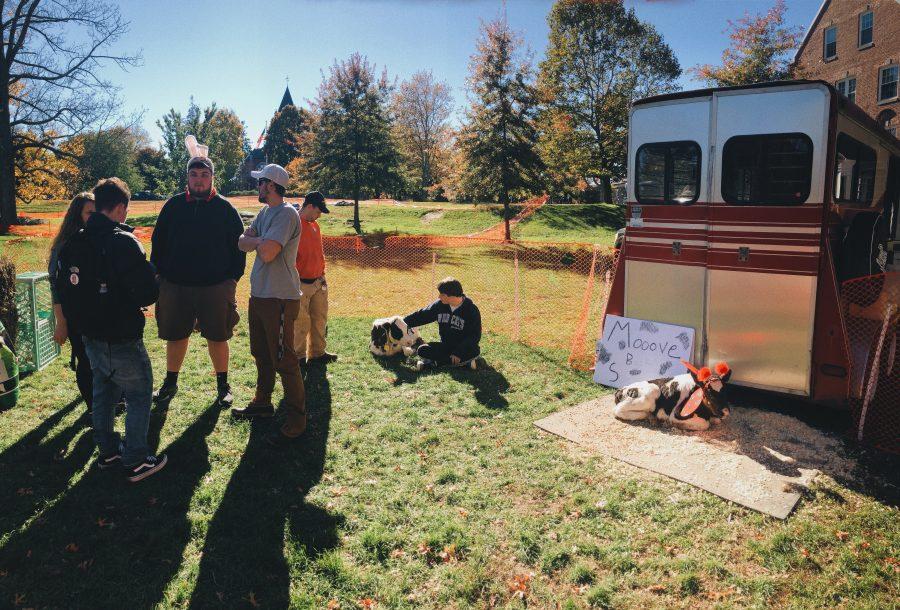
New tables and seats on the third floor of the newly constructed dining area in HoCo.
HoCo’s expansion cost 10.5 million dollars, took over 8 months and was the first step in a larger scale dining program at UNH according to Jon Plodzik, director of dining halls operations. The renovations and subsequent expansion started back in May 2015 and are finishing up as students arrive for the Spring 2016 semester. So what exactly did we get with the new HoCo expansion?
The biggest additions are the impressive new seating areas located behind the grill station to the right of where guests enter. The expansion added a three-floored dining area connected with terraces, balconies and split-level staircases. The modern style allows guests to move easily through the open areas between tables. Now the upstairs of HoCo opens up into the third floor of the new addition. Natural light floods in through the wall of windows.
The new area increases the total number of seats from 883 to 1,202. The green seats in the new area are a product of the Coca-Cola Company and are made from recycled 20 oz. plastic bottles.
First however, guests need to figure out how to use the new lockers and finger print scanners.
“There’s some challenges associated with the lockers,” said Plodzik about the finicky nature of the new electronic lockers. “We realize that students do want to secure some of their valuables…the old keys were very problematic because people would take the key.”
“I was at Universal Studios and they had key-less lockers and I thought ‘Why cant we have key-less lockers?” said Plodzik
Plodzik explained his theory that taking the $49 keys must have been a pledge task because of how often they would get stolen. Now students must type in a six-digit code and also scan their fingers to open and close a locker. The technology is state of the art, but the process is time consuming especially for student in a rush.
The fingerprint scanners to enter the dining hall are also brand new and replace the previously updated finger scanners from just last semester. The previous finger scanners only held 10,000 fingerprints but the number of students with meal plans was 11,000. The temporary solution was to create a separate lane and database for students with swipes hence the now defunct swipes lane.
The new fingerprint scanner system holds 50,000 fingerprints and eliminates the need for separate lanes.
“This allows us to get rid of the lanes and you can come into any one of the lanes and it is able to recognize you,” explained Deb Scanlon, the area manager at HoCo.
Scanlon explained that the new technology has been a learning process for the team saying, “The light at the end of the tunnel is right there! We’re almost touching it.”
Working with Miller Dyer Spears Inc., an architecture company out of Boston, and Ricca Newmark Inc., a food service design company, the HoCo team worked on developing the new dining areas.
Drawing inspiration from the old outdoor seating area that used to be outside of Dunkin’ Donuts they made a design that is supposed to resemble a garden terrace. Additionally, the team at HoCo worked with Invision Strategies LLC, to study the usage of meal plans and to solve the problem of over crowding in the dinning halls.
“[HoCo is] really a powerful tool for orienting and recruiting students to campus” said Plodzik.
“No student fees were increased because of this addition,” said Plodzik adding “we took the money we had saved over a number of years and used that while trying to drive efficiencies within our program.”
“I like it, I think there should be drink stations”, said Kyla Madden a UNH undergraduate, adding “There is more seating but all of the food [stations are] the same so the lines are ridiculous.”
“It’s definitely nicer than the old part,” added Madden’s friend Caitlin Gaughan.

























